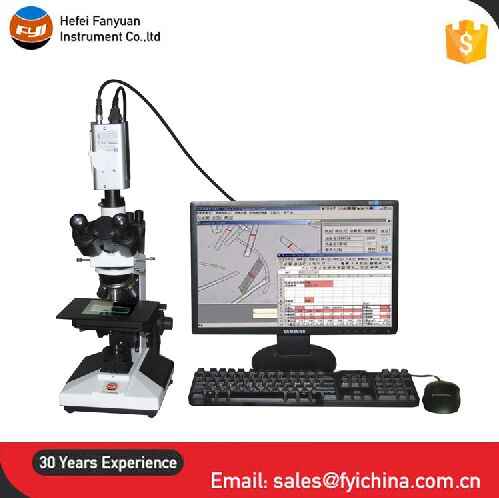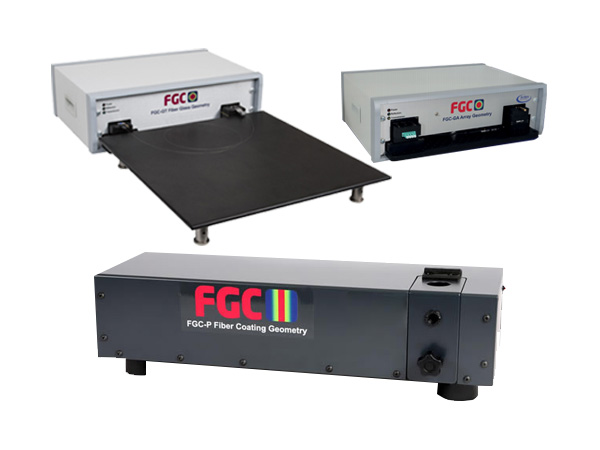Enhance Your Fibre Optic Projects With an Efficient Diameter Analyser
The assimilation of an effective diameter analyser right into fiber optic projects offers as a crucial component in attaining precision and uniformity. By helping with exact size dimensions, these analysers not just boost the high quality of setups but likewise mitigate prospective compatibility issues among components.
Value of Size Dimension
Determining the size of fiber optic wires is a critical task that ensures optimal efficiency and dependability in communication systems. Accurate diameter measurement is crucial for various factors, largely for maintaining signal integrity and lessening loss. A wire's size straight affects its ability to transmit light successfully; discrepancies from the specified size can bring about raised depletion, which impacts the general performance of the network.
In addition, accurate dimension is crucial throughout the installation and upkeep of fiber optic systems. An incorrect fit between connectors and wires can cause signal destruction or full failure of communication web links. By making sure that diameters are within specified tolerances, specialists can boost compatibility between components, resulting in enhanced system integrity.
In enhancement, diameter measurement plays a significant role in quality assurance throughout production. Uniformity in the diameter of fibre optic cords is essential for guaranteeing uniform efficiency across various sets. optical fibre diameter analyser. This uniformity assists producers keep industry standards and promotes self-confidence among end-users
Attributes of an Efficient Analyser
A reliable analyser for fiber optic jobs need to include several key features that boost precision and usability in size measurement. High-resolution optical sensors are essential for precise size readings, enabling users to spot even the tiniest variants in fiber density. These sensing units need to be matched by innovative calibration systems, guaranteeing constant efficiency throughout various problems and products.
Secondly, an easy to use interface is important for helping with simplicity of operation. This consists of user-friendly software application that allows for smooth data input and outcome, in addition to graphes of the measurements taken. A mobile layout enhances use in different area settings, making it easier to conduct assessments on-site.
Additionally, the analyser should support multiple dimension settings, accommodating numerous fibre kinds and applications. The ability to store and obtain historic information is an additional crucial attribute, permitting users to track performance in time and make informed choices.
Benefits for Fiber Optic Projects
Applying a size analyser in fibre optic jobs supplies considerable advantages that considerably boost job efficiency and top quality. One of the key advantages is the capacity to ensure exact dimensions of fibre diameter, which is vital for maintaining optimum efficiency in fibre optic systems. Accurate diameter analyses help in the identification of disparities that could lead to signify degradation or loss, thus making sure premium transmission.
Additionally, making use of a diameter analyser enhances the quality assurance procedure. By automating dimension tasks, task teams can reduce the time invested in hand-operated evaluations, bring about faster task completion and minimized labour expenses. her explanation This effectiveness also enables for more extensive screening methods, leading to enhanced item reliability.
In addition, uniformity in fibre size measurements advertises compatibility with other fibre optic parts, lessening the danger of installation errors and improving general system performance. The unification of a diameter analyser not only aids in preserving industry criteria yet also fosters self-confidence in project deliverables.
Combination Into Existing Workflows
Incorporating a size analyser right into existing operations can significantly enhance the operational efficiency of fiber optic jobs. By perfectly including this modern technology, teams can accomplish precise measurements that are important to preserving the stability and efficiency of fibre optic systems. This combination permits real-time address data collection and analysis, which can be important during the production and setup phases.
Moreover, the capability to automate diameter dimension processes decreases the capacity for human error, guaranteeing regular quality control throughout the job lifecycle. The data produced can be quickly shared across systems, helping with cooperation among designers, technicians, and task supervisors. This accessibility enhances decision-making and increases task timelines.

Selecting the Right Diameter Analyser
When choosing a size analyser for fiber optic jobs, it is necessary to consider a number of essential variables that straight effect dimension accuracy and functional efficiency. The resolution and precision of the analyser should straighten with the particular requirements of your task. Higher resolution instruments can discover minute variants in diameter, browse around here which is essential for guaranteeing optimal performance in fiber optic systems.
For tasks with tight deadlines, a size analyser that supplies quick information acquisition can substantially improve performance. In addition, take into consideration the analyser's compatibility with existing systems and software application.
Another vital element is the range of diameters the analyser can accommodate. By very carefully evaluating these factors, you can choose a diameter analyser that boosts the efficiency and accuracy of your fiber optic jobs.
Final Thought
Finally, the integration of an effective size analyser is extremely important for enhancing fiber optic jobs. Exact size measurements make sure ideal efficiency and dependability while reducing installation errors. Advanced functions assist in real-time information collection and compliance with industry criteria, inevitably boosting the quality of deliverables. By focusing on the choice and application of an ideal analyser, task effectiveness is dramatically enhanced, leading the way for effective results in fiber optic applications.
A cord's diameter directly influences its capability to send light effectively; discrepancies from the specified diameter can lead to enhanced depletion, which influences the general performance of the network.
